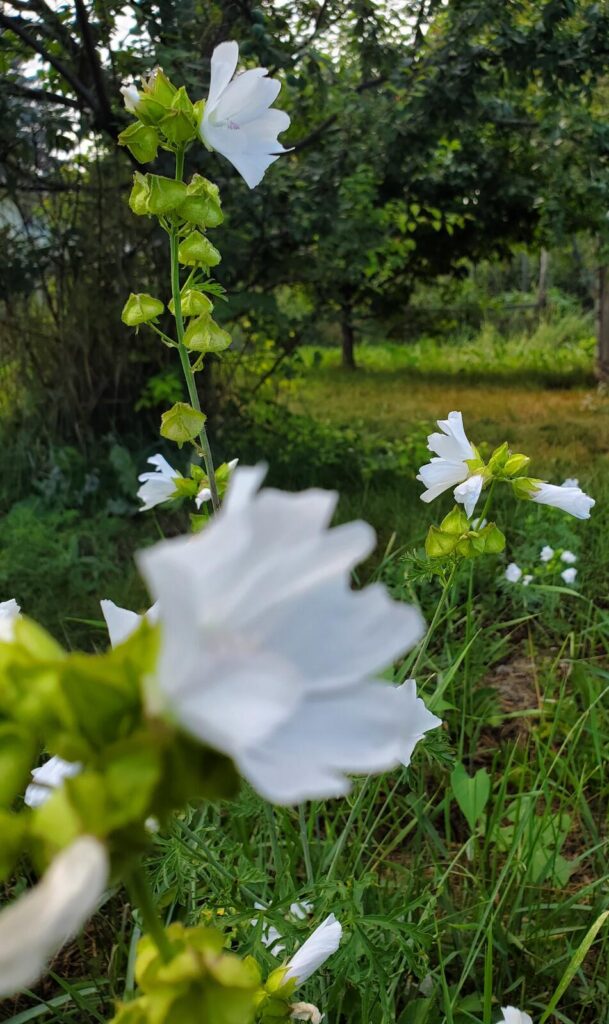(Or marsh-mallow), aka Althaea officinalis.
Marshmallow is a perennial flowering plant that grows in damp areas. It stands 3-4 feet high with a branched stem. The leaves are soft and hairy with three divisions, sort of like a maple leaf. Along the upper stalk, beautiful flowers appear. The flowers have five heart-shaped petals that range in many colors, from white to pink or mauve. These flowers appear in late summer from July to September
For centuries, it grew wild in sunny, cool locations, such as along the edges of lakes or marshlands. You can still find it wild or naturalized in some places.
Marshmallow is considered to be highly medicinal, particularly its root, which is used in teas, tinctures, and other concoctions for herbal treatment of certain ailments. It is regarded as being anti-inflammatory, a diuretic, an emollient, able to treat an upset stomach, good for treatment of insect bites and wounds, among other qualities. It has also been used to naturally treat respiratory issues such as dry cough
and to reduce pain and swelling of the mucous membranes that line the respiratory tract. Historically, marshmallow was used by many ancient civilizations. Perhaps most popular is the Egyptians’ use of it. They used the mucilage of the marshmallow root to create a confection, because when it is boiled it creates a gelatin-like substance and a soft texture, similar to the marshmallow treats we enjoy today.






